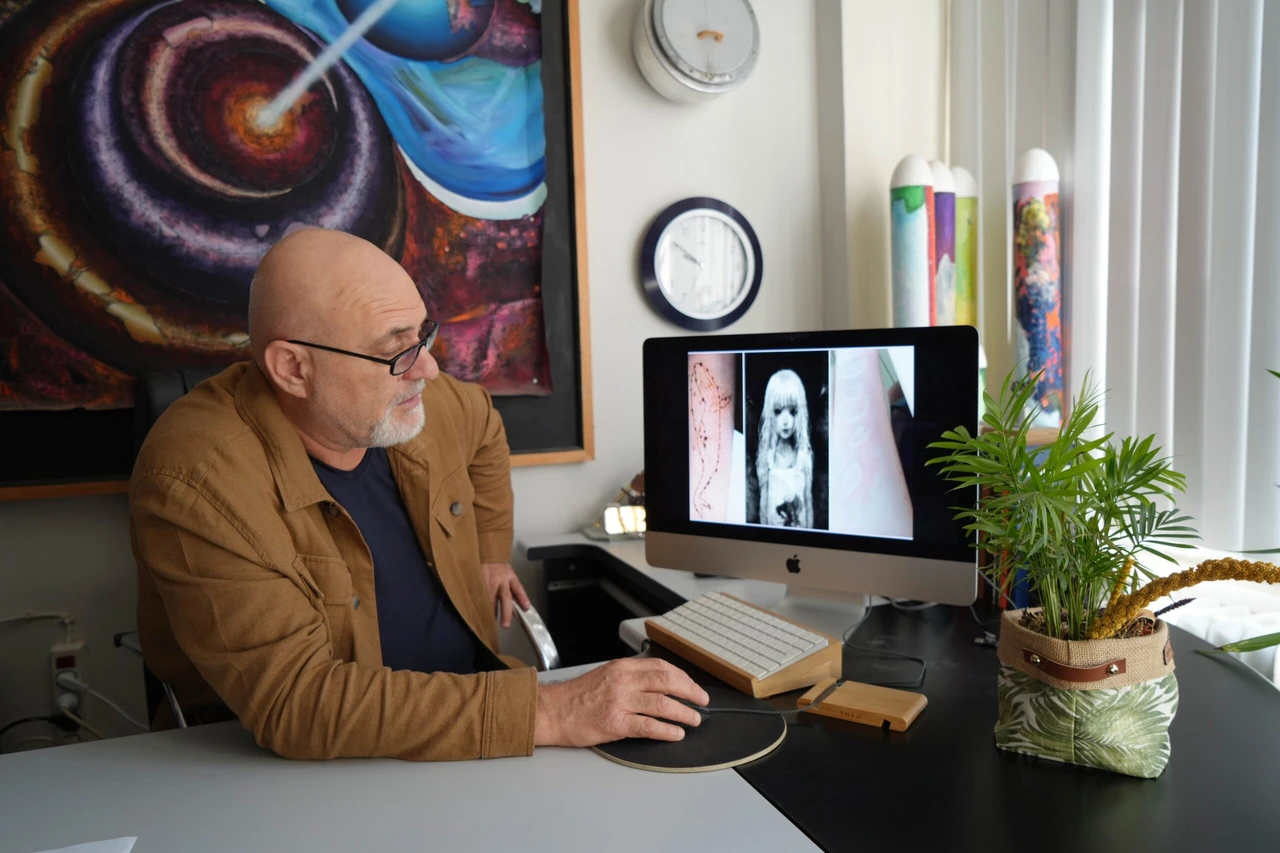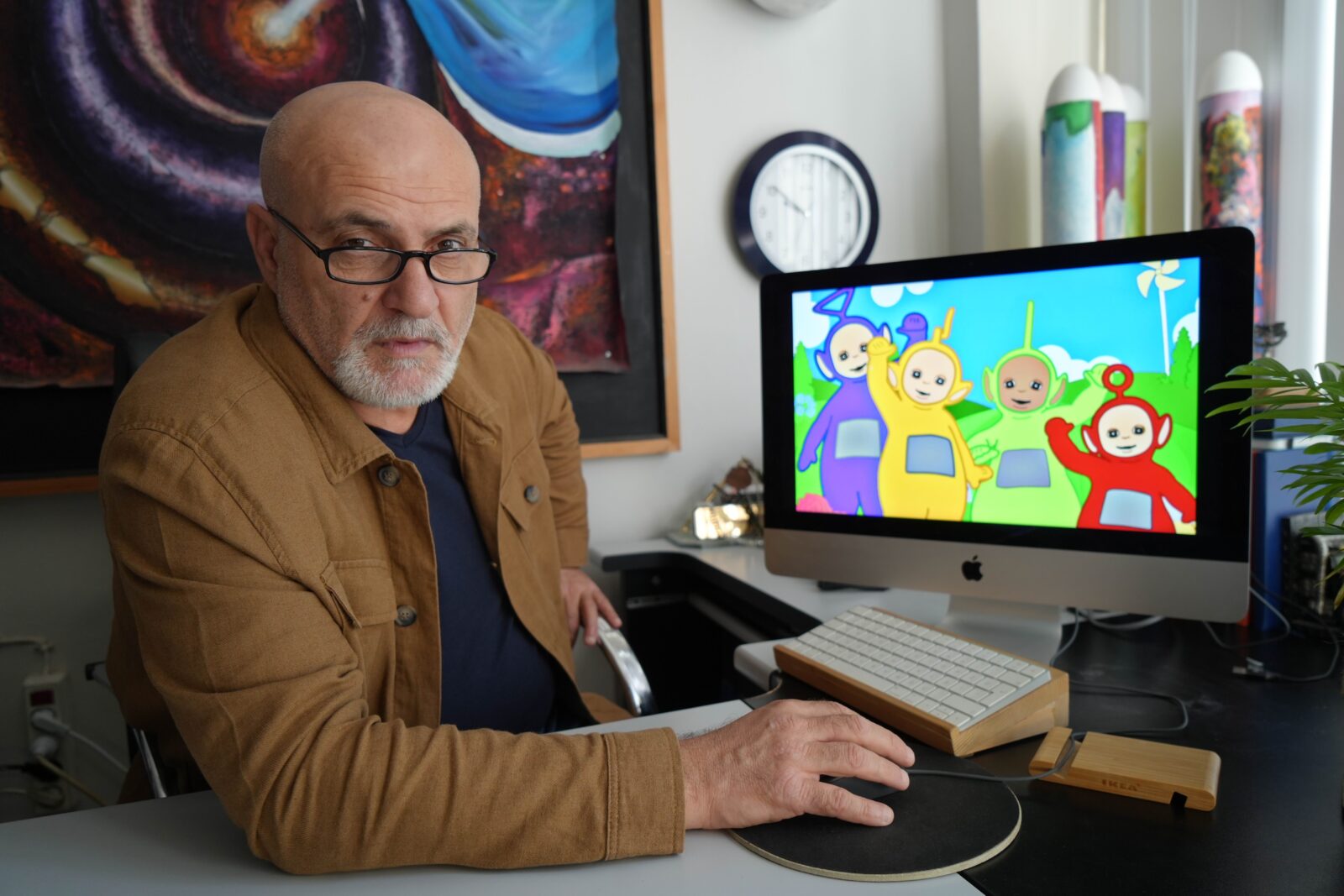Turkish professor reveals study on visual culture’s link to youth suicide
 Professor Metin Eker, who has been conducting research on subconscious thoughts and codes for years, explains that subconscious coding, which begins with toys and cartoons from infancy, becomes ingrained in the mind during adolescence through imagery and visual culture, Türkiye. October 12, 2024 (IHA Photo)
Professor Metin Eker, who has been conducting research on subconscious thoughts and codes for years, explains that subconscious coding, which begins with toys and cartoons from infancy, becomes ingrained in the mind during adolescence through imagery and visual culture, Türkiye. October 12, 2024 (IHA Photo)
In an age where youth mental health challenges are on the rise, a new study by Turkish academic professor Metin Eker explores the troubling impact of modern visual culture on young minds.
His research highlights how the toys children play with, the films they watch, and even the colors they encounter can significantly affect their mental well-being.
These influences can embed themselves in the subconscious, potentially leading to harmful choices, including addiction and suicide.

Professor Metin Eker’s groundbreaking research
After years of exploring the subconscious influences of visual culture, professor Metin Eker concluded that coding begins early in life through toys and cartoons.
As children enter adolescence, these subconscious codes, combined with modern visual culture, play a role in increasing rates of suicide and violence seen in recent judicial cases.
Eker, a faculty member at Ondokuz Mayis University (OMU) and the President of the Culture, Art and Tourism Academy Association, stressed the urgent need for action to safeguard future generations.
He advocated for educating both youth and their families about visual literacy to mitigate these risks.
Dark influence of color
Professor Eker highlighted how industrial visual culture has historically employed the color blue to lead individuals toward suicide, death and substance abuse.
“Having worked with youth for years, I’ve seen how the 18-22 age group is profoundly affected by these cultural messages. My study, ‘Codename Blue,’ conducted 15 years ago before the emergence of the ‘Blue Whale’ challenge, revealed how a seemingly innocuous color can be twisted into something sinister.”
“We discovered that blue filters are often used to keep viewers engaged on screens, which can lead to harmful behaviors. The prevalent use of blue signifies a cultural-economic target, as children and youth are particularly vulnerable,” he added.

Puzzle toys, rising divorce rates
Eker highlighted the detrimental effects of childhood coding on adult relationships, particularly through the use of puzzle toys.
“Children are conditioned to derive more pleasure from destruction than creation. This conditioning is evident in the rising divorce rates; in Türkiye, divorce rates have increased from below 20% to approximately 40% in Europe.”
“The current generation perceives marriage as a game, leading to a similar approach to life decisions, even suicide,” Eker underscored.
More dangerous symbols than the Illuminati
According to Eker, popular culture, especially cartoons, uses colors that encourage bad habits in children. Recent incidents of suicide and violence in places like Samsun and Istanbul have raised concerns.
Eker argues that children’s inability to discern good from bad within their visual culture is alarming. The bright, fluorescent colors used in modern animations aim to disrupt perception and implant lasting messages in young minds. “These visual strategies can make children susceptible to radical decisions and behaviors,” he added.

Understanding self-deprecation of youth
Through careful observation, Eker notes how young people aged 18-22 exhibit signs of despair and self-devaluation in their signatures.
“I see that many students scribble over their signatures. This signifies a lack of self-worth. The themes they choose for projects often revolve around death, chaos, and anxiety, showcasing a troubling mindset shaped by the industrial visual ecology around them,” Eker added.
Professor Eker’s work highlights the urgent need for awareness and education regarding the impact of visual culture on youth mental health.
Understanding the underlying motivations behind seemingly innocuous aspects of everyday life is crucial to preventing further societal issues.



